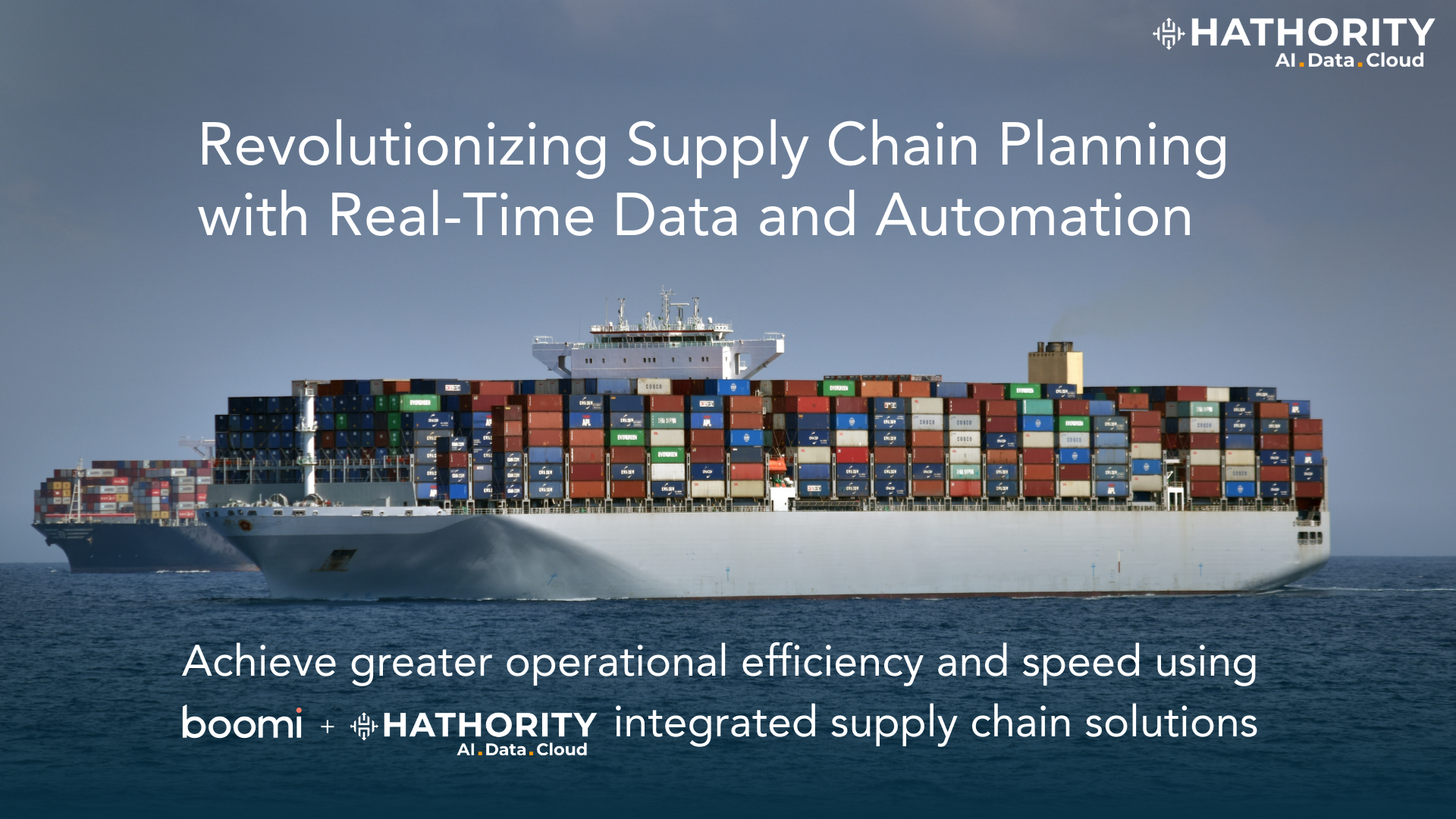
In today’s hyperconnected environment, supply chain management has moved from a back-end function to a strategic driver of business value. Volatile markets, shifting customer behavior, and supply disruptions mean incremental fixes won’t cut it — you need real-time data and intelligent automation.
This is not a slogan. Organizations using Boomi for integration and Hathority for implementation are gaining the agility, intelligence, and scale required to outperform competitors. Below is a clear breakdown of the problem, the approach, risks, and how to execute.
The Problem: Why Legacy Systems Fall Short
Legacy supply chain stacks are often fragmented, slow, and manual. Those characteristics produce blind spots, errors, and high operating cost. Manual inventory updates and batch data movement make responsiveness impossible.
Key challenges include:
- Stockouts or excess inventory due to delayed information sharing
- Slow response to changing demand, resulting in poor customer experience
- Complex reconciliations across ERP, CRM, WMS, and logistics systems
- High operational cost from repetitive manual work
- Lack of unified, end-to-end visibility across the network
Understanding Key Concepts: Real-Time Data and Automation
Real-time data integration means systems (ERP, CRM, warehouse, logistics, IoT) share information instantly instead of in delayed batches. When data is live, decisions are fast and aligned.
Automation is about removing repetitive human work: AI workflows, RPA, and rules that process orders, update inventory, and trigger partner notifications automatically.
Using Boomi’s low-code platform alongside Hathority’s domain expertise provides a centralized hub — replacing brittle point-to-point integrations with a scalable orchestration layer.
The Modern Approach: From Fragmented to Unified
Modern supply chains form a single source of truth: a digital command center that ingests supplier, warehouse, and logistics data and exposes it to analytics, operations, and partners in real time.
Typical flow examples:
- Sales update inventory across systems and auto-trigger purchase orders when thresholds are hit.
- IoT sensors feed live condition and location data into dashboards for proactive actions.
- AI optimizes routing, delivery scheduling, and procurement dynamically.
- Collaboration tools keep teams and partners aligned on the same live data.
With Boomi and Hathority, these capabilities are practical and scalable for organizations of any size.
Risks and Guardrails: Balancing Innovation with Control
Real-time connectivity increases exposure unless controlled. Successful programs pair innovation with governance:
- Cybersecurity — encryption, strong authentication, network segmentation.
- Change management — train teams to trust automation and manage exceptions.
- Data governance — clear ownership, lineage, and privacy compliance.
Technology alone won’t fix problems — process discipline and cultural change are mandatory.
The Payoff: What Businesses Stand to Gain
When you modernize the supply chain with real-time integration and automation, measurable gains follow:
- Faster order and shipment processing; better customer experience
- Fewer manual errors and higher data accuracy
- Early detection of disruptions through predictive analytics
- Lower operating costs via intelligent automation
- Scalable architecture that adapts to new markets and partners
Real-World Success Stories
- Retail: a national chain integrates POS, ERP, and logistics to automate restocking and optimize deliveries.
- Manufacturing: a global manufacturer uses IoT plus Boomi integrations for predictive maintenance and automated procurement.
- Logistics: a provider automates compliance workflows and offers customers real-time shipment visibility.
Implementation Roadmap: From Vision to Execution
Transformation is iterative. A practical phased approach:
- Assess current systems, data silos, and operational pain points.
- Connect ERP, CRM, WMS, and logistics platforms using Boomi.
- Automate repetitive, high-value tasks with RPA and AI workflows.
- Pilot real-time dashboards and KPIs before scaling.
- Train teams to handle exceptions and monitor automation.
- Implement cybersecurity and governance frameworks early.
Conclusion: Building the Supply Chain of the Future
Real-time integration and automation are reshaping supply chain excellence. By combining Boomi’s integration platform with Hathority’s implementation skills, organizations move from reactive problem solving to proactive operations. The result: supply chains that are faster, smarter, and more resilient.
The companies that act now — connecting intelligence across their networks — will lead on responsiveness, cost, and customer trust.

